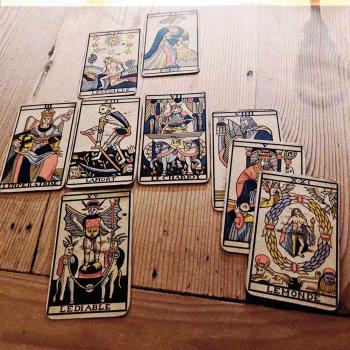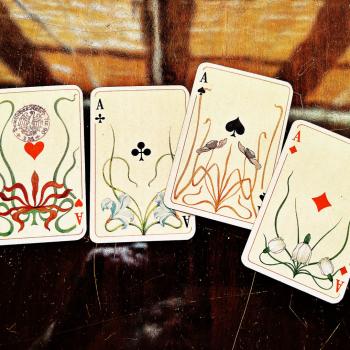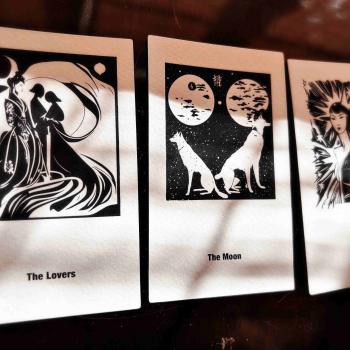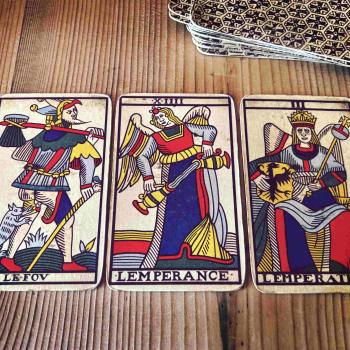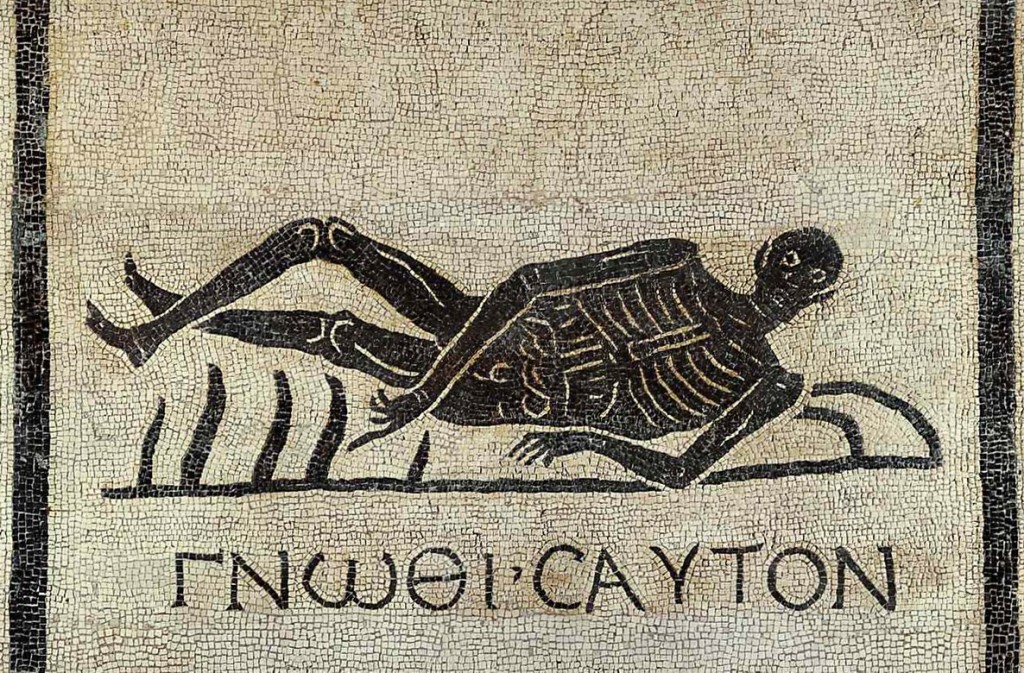
Today I felt like asking the cards the following question: What’s up with the “Know Thyself” project that’s associated with the oracle at Delphi? This oracular saying, inscribed at the entrance to the temple of Apollo, has both fascinated people and given them something to fear, the implicit statement being one of warning: “Know Thyself”, or else… But what does it mean?
I asked my cards, as I don’t have the time to launch into an ancient discussion that keeps changing form and content all according to the general public opinion shifting faster than the wind.
The Empress, The Pope, The Sun Showed Up
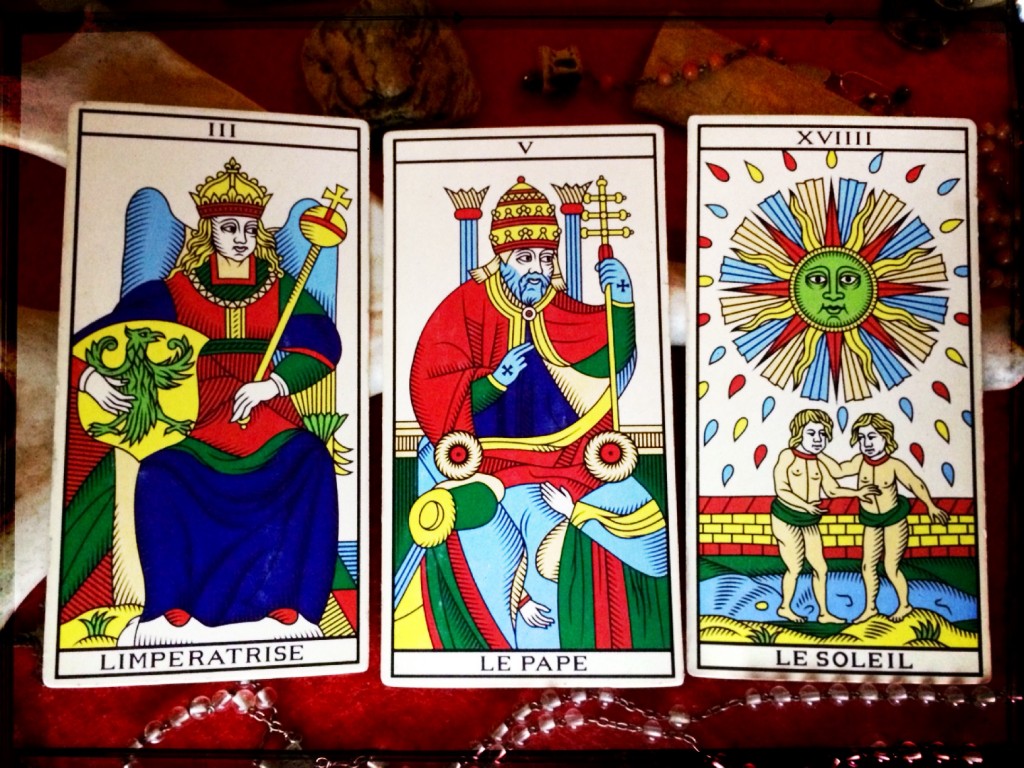
The imperial woman commands. The man of church instructs. And the naked ones play.
Well, that’s a good message, especially the part that suggests ditching your clothes, culture, and couture. Welcome to the realm of relations. The woman of power has her eyes on the preacher whose eyes are on the sun. How close is she to that illumination? Some stripping is required. The children always get there first. “Be like the children,” Jesus said. “Go back to your fairytales,” the modern shamans say. The light from the sun just happens everyday. It cares little about you.
I like this as it aligns with my Zen Buddhist, nondualist orientation of the non-essentialist and non-absolutist direction. Phew, I said it, whatever it means. The bottom line is pretty simple though: There is no identity, only language about it. An emblem on your shield. But language is not reality.
What is reality? Reality is life as it happens completely independently of what we think of it. Reality is the experience of the now, the now such as it is, its truth always running naked under the sun, independent of cultural modifications through quantifiers, qualifiers, evaluations, measurements, conclusions, and delusions.
Ah, the warmth… At least the Pope is wearing gloves while holding on to his staff. What would they look like, without their clothes, The Empress and the Pope? They would just be. They would not be that, a function of their professions. The Sun knows what the truth is.
Know thy Classics
But let’s have a quick look. The classical view on the maxim “Know Thyself” associates it with the notion of temperance, suggesting a relational process of being in the world that doesn’t lead to things blowing up in your face, or making your hands sweat from holding your possessions too tight (see the 10th-century Byzantine encyclopaedia, Suda).
To begin with, there is no “YOU” to blow up, as “you” are part of a web of connections. Whoever holds your possessions is not “you.” They are there by virtue of grace and faith and all the other intangibles that you wish were concrete. Hence it makes sense that in the classical view we have balance in focus, not the self.
I’m interested in this view to the extent that it doesn’t presuppose that the “Know Thyself” anthem is an ode to the self, but rather a song of connection. That is to say, insofar as “you” are everything already, both the connection and the connector – or in more contemporary scientific parlance, you are both the observer and the observed – there are no self-oriented worries or identity crisis to be concerned with. If you want illumination, go straight to the sun, and let it happen. That’s where we’re always at. We don’t negotiate for awareness. We’re in it as naked as in our hearts.
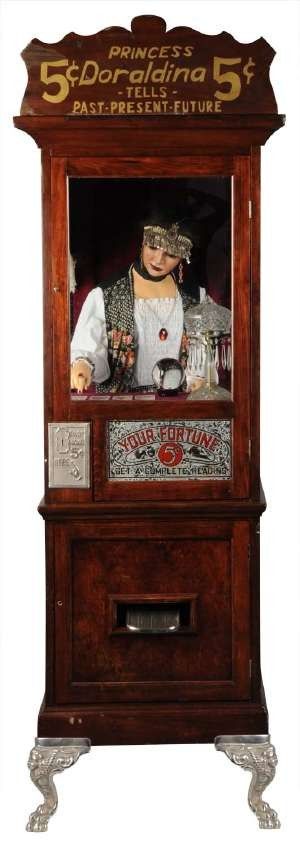
… And thy Time
At the other end of the spectrum, we find the “Know Thyself” maxim as a manifestation of personal effort and individual expression. In our contemporary setting, “Know Thyself” has become a currency you can exchange at the spiritual supermarket. A fortunetelling dispenser: In goes a coin, and out pops a self.
What the Oracle Says
But here’s what I think: The reason why I personally live with oracles is not because they supposedly give me access to life’s mysteries, but because they function as a constant reminder of how my “self” is never more than a thought.
I use oracles in the form of divination with the cards, bibliomancy, runes, the casting of bones and other such devices because they help me destabilize my “self.” All the time.
As soon as I think, “hmmm, I’m so clever today, I feel like a true magician,” the cards say, “think again.” Or better yet, “stop thinking, for today, today you’re Death.”
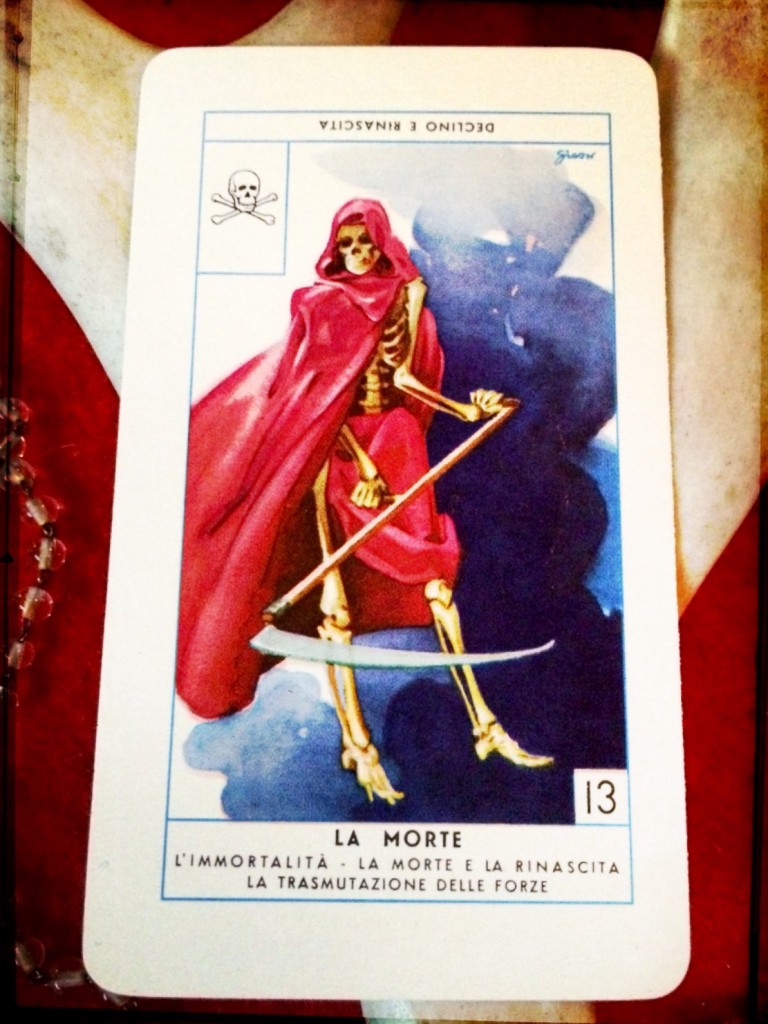
Indeed, how many times do we say that every time we lay down three cards a new story emerges? This includes the story of the self. But why must the enunciation of I AM be followed by THAT? – as some nondualist masters have asked – and hence require constant packing and unpacking? New clothes all the time, some the famous Emperor’s New Clothes, the “no clothes,” but still clothes, invisible as they were in the fairytale of all fairytales about the self, for THAT emperor also suffered from the delusion of identity and self-affirmation: “I am the Emperor, even though I’m naked.” Yep. That one knew himself.
The cards can tell a story about anything, particularly about the mythologized self. The ever booming card industry participates eagerly in charting the Fool’s Journey, or that of the Hero with a Thousand Faces. But ME, however enchantedly crafted, is still just that, a story, a cloud as cold as the blade in Death’s hands. As this is a fact that’s incontestable, ask yourselves this question: To what extent does it actually make sense to think of the cards as tools for teaching you about the self? What self?
Test Thyself – Not
In my teachings on how to read cards with view to getting inspiration on how we can concretely and coherently solve a problem, I run personality tests. Not because I’m interested in human nature, but because I’m interested in freedom.
The underlying teaching in the test is about getting people to free themselves from their fears and desires. With your attention liberated from worries about the self – which does not exist other than as a story in your head – you can do many more things, like nothing, just breathing, and celebrating life as it happens. You can approach others from a position that’s completely devoid of self-interest, judgment, and personal involvement. That’s the space where I find true compassion, the space that’s empty of the delusions of the mind and its related concepts of the self and other.
Read thy Nothing
In this sense, reading cards for me is very much an exercise in recalibrating my focus. It helps to know when I Am. . . the Empress, the Hermit, the Star, or Temperance, for as soon as I see those possibilities articulated in the visual imagery of the cards, I bring my focus back to the awareness of “no such thing” beyond story level, beyond thought level. I liberate myself of self-manifestations.
This allows me to start my days with a good laugh. As I look into the mirror, or the cards reflecting back at “me”, I laugh at the idea of “myself.” I laugh and laugh and laugh at myself until I get a bellyache. This laughter ensures that whatever comes my way during the day will be received just as it presents itself to me in all its forms. I may have an opinion about what comes my way, I may be happy for it, or I may even be appalled or enraged, but I try to never get involved.
This is simply because I practice seeing the truth, seeing things as they really are; seeing how everything else in the face of impermanence is nothing and amounts to nothing. This “nothing” is not the negation of existence, as some would have it. Quite the contrary. It is a celebration of it.
What we think we are is exactly that, a thought, not reality. Our identity is not what we make of it, or how we cling to it. Reality is whatever stares us in the face the moment we see things as they really are, the moment we can penetrate the most impenetrable mystery, which is always the obvious. As soon as we grasp this simple truth, that there is no ME, we are quite free of having to devise strategies for the SELF, and how to make this “self” happy.
This is what I urge others to do with their cards. Seek the obvious, not the self. Bathe in that impenetrable mystery, and see how the obvious leaves your skin. As smooth and shiny as the illuminations from the sun.
Thyself, a Poet
Here is a small practice: Next time you come across this line, “Know Thyself,” think of nothing. You are nothing, so there’s nothing to know. Go out. Smell a flower. Stay together. If it rains, open your mouth and taste the water. Stand there in the wind, or the warmth of the sun.
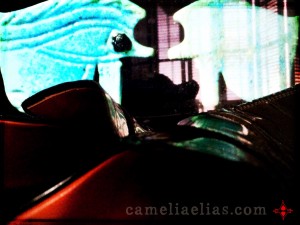
When you’re done, go home. Feel the realization of how blissful and peaceful you can be, when you’re empty of fear, desire, envy, rage, addiction, and aversion.
Place your shoes on your altar, and venerate your feet. Light a candle. Your thoughts, vanished without a trace in the night, leave your yearning for the Absolute and Divine Love disfigured. Stand there, naked and transformed, and sing a song to your penetrating eye.
§
For penetrating vision, join my free newsletter. All cool stuff.

Patheos Pagan on Facebook.
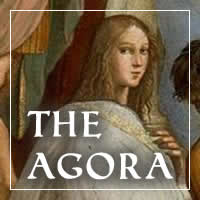
the Agora on Facebook
The Cartomancer is published bi-monthly on the second and fourth Wednesday here on the Agora. Subscribe via RSS or e-mail!
Please use the links to the right to keep on top of activities here on the Agora as well as across the entire Patheos Pagan channel.






